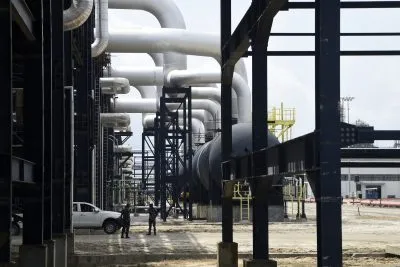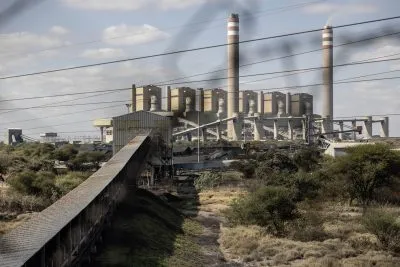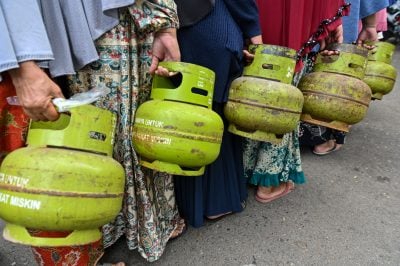As Covid-19 led to serious contractions across several key areas of the economy, it was Kenya’s agricultural sector that cushioned East Africa’s largest market from a deeper slump. The sector recorded improved growth of 6.4% in the second quarter of 2020 compared to growth of 2.9% in the corresponding quarter of 2019.
While industries like horticulture suffered losses due to widespread lockdowns in target markets, exports of coffee, tea and fruit actually increased over the period. The increased contribution to GDP over the pandemic was a reminder that although Kenya is known for sectors like technology, it is agriculture that forms the backbone of the economy, accounting for some 34% of GDP.
The sector is responsible for 65% of export earnings and more than 80% of Kenya’s population work in agriculture, which also includes fisheries and livestock.
“The pandemic provided an opportunity for the country to re-focus attention on the agriculture sector,” says Peter Munya, the cabinet secretary for Kenya’s Ministry of Agriculture, Livestock, Fisheries and Cooperatives.
“The overall agricultural sector goal, as envisaged in the Vision 2030, is to achieve an average growth rate of 7% annually expected to translate to an additional income of $742m, which is a significant contribution of agriculture to GDP.”
Current headwinds
However, the sector is not without challenges, and reforms must be implemented to achieve an ambitious growth rate of 7% each year. Headwinds include fluctuating environmental issues like drought, floods and locust invasions.

The locust plagues that originated in Yemen and ravaged parts of Somalia, Ethiopia and Kenya last year were eventually brought under control due to concerted efforts by various stakeholders including government entities and the UN Food and Agricultural Organisation (FAO). Though crops were destroyed in certain parts of Kenya during the three successive locust storms, the successful use of helicopters to spray the insects helped stop a complete decline in agricultural output.
But the sector is currently under pressure from reduced rainfall across most of northern and eastern Kenya, which is expected to drive poor crop yields and below-average livestock body conditions in marginal agricultural areas. Other roadblocks include perennial issues like lack of finance in the market, the high cost of inputs and low yielding crops as a result of limited industrialisation.
While Kenya boasts large commercial agribusinesses, much of the sector still belongs to smallholders. Transforming the efficiency and output of smallholdings will be key to boosting the sector’s overall productivity.
“Smallholder farmers are at the heart of the Agriculture Sector Transformation and Growth Strategy (ASTGS),” Munya tells African Business.
Last year, the ministry launched several agricultural reform bills to introduce clarity around the management of various commodity value chains. The ministry is also looking to use digital transformation to benefit smallholders through the Agriculture Transformation Office (ATO).
It will develop 32 mobile farmer advisory apps and create the Kenya Agricultural Observatory Platform (KAOP) to provide accurate weather forecasts to the 47 counties. The ATO will also digitise data on stocks, average prices, forest production and cross-border imports through a Digital Food Balance Sheet.
Along with government action, Kenya is home to numerous startups that are working to digitise and increase the efficiency of the sector across the value chain. Twiga Foods, one of Kenya’s best known agri-startups, which raised $30m in 2019, has set up an app-based distribution company to serve the country’s informal shopkeepers with fresh fruits and vegetables. Other startups are working in subsectors as varied as livestock insurance, irrigation and weather monitoring.
Another headwind is rising inflation and rising food prices. As vaccination programmes around the world allow economies to bounce back from the pandemic, spending is increasing and central banks in most places are cautiously eyeing increasing interest rates.
According to the FAO, world food prices rose for a ninth consecutive month in February, hitting their highest level since July 2014, led by jumps in sugar and vegetable oils.
“Generally the prices of key food items have climbed significantly over the past couple of months, adding pressure on already cash-starved households,” says Munya.
In order to shield citizens from global price fluctuations, the government has put in place a plan for 100% food and nutrition security. It hopes to set up five agro-processing hubs across the country via a rapid Public Private Partnership (PPP) process for domestic and export markets through a one-stop shop.
The ministry is also hoping to serve 800,000 farmers through the creation of 1,000 small and medium enterprises (SMEs) that provide inputs, equipment, processing and post-harvest aggregation.
Stimulus package to counter Covid
Despite the challenges, Kenya’s agricultural sector is likely to make a swift recovery from the pressures of Covid-19.
“In the agricultural sector, global lockdowns led to price hikes, increased costs of production, job losses and closure of businesses, resulting in reduced earnings in the sector,” says Munya. “The disruptions in the agri-food supply chain were manifested through reduced and irregular supply, increased post-harvest losses and increased costs of inputs, especially animal feeds.”
However, several key policies were implemented to minimise damages and ensure the sector continued to grow. When the pandemic first hit Kenya in March 2020, the production, supply and transportation of agricultural produce was declared an “essential service” to permit the movement of food products and fishing past curfew hours.
The government also initiated an agriculture stimulus package to the tune of $45.24m. The package aimed to subsidise the supply of farm inputs, support flower and horticultural producers to access internal markets through reduction of taxes and negotiations with cargo flights, and provide enhanced working capital for the Kenya Meat Commission (KMC).
The ministry’s current aims are to build back better from the pandemic by hitting several key targets. These include increasing agriculture’s contribution to GDP from $25bn to $37bn, increasing the average daily income from $4.65 to $6.25 and increasing job creation from 500,000 to 1.1m.
Foreign investment is key
Foreign direct investment (FDI) will be key to Kenya achieving its agricultural ambitions.
The World Bank’s Enabling the Business of Agriculture survey found that Kenya performs well in attracting capital when compared with other African countries. Kenya achieved the highest score on the continent for supplying seed, securing water, sustaining livestock and trading food.
However, in order to encourage more investment the sector must become more transparent and accountable.
“The fight against corruption, malpractice and poor governance is part and parcel of creating an enabling business environment,” Munya says.
Want to continue reading? Subscribe today.
You've read all your free articles for this month! Subscribe now to enjoy full access to our content.
Digital Monthly
£8.00 / month
Receive full unlimited access to our articles, opinions, podcasts and more.
Digital Yearly
£70.00 / year
Our best value offer - save £26 and gain access to all of our digital content for an entire year!
 Sign in with Google
Sign in with Google 



